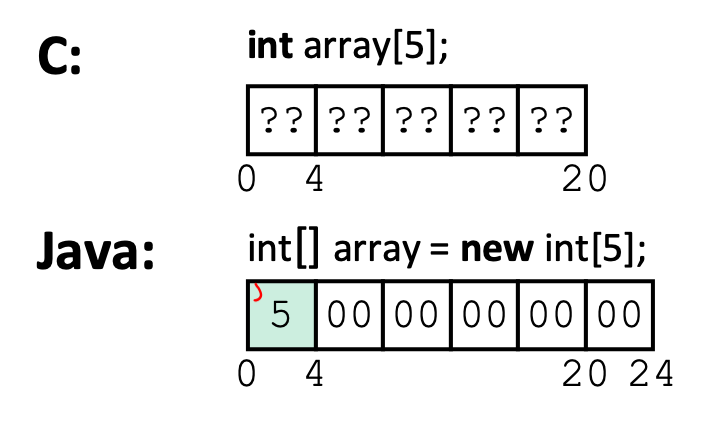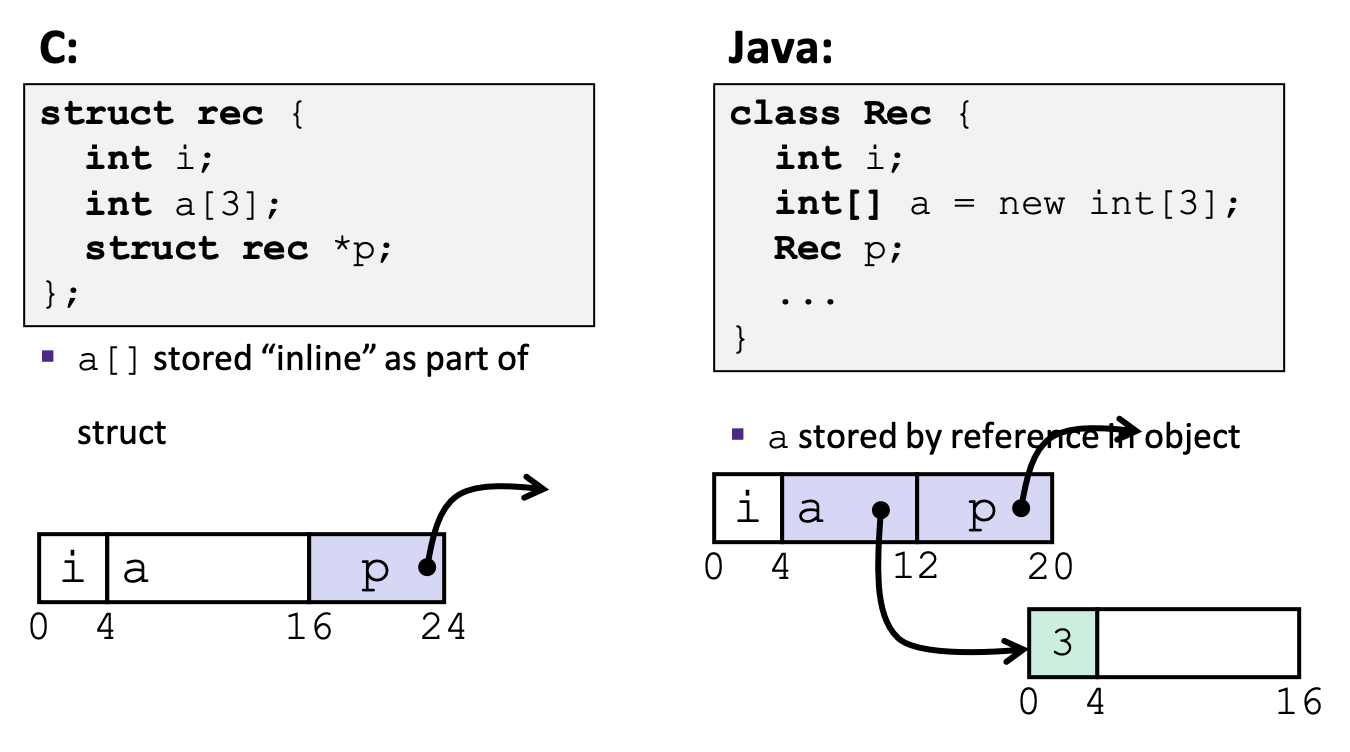CS 208 s21 — Java vs C
1 Video
Here is a video lecture for the material outlined below. It contains sections on
- High-level differences (0:27)
- Arrays (7:18)
- Strings (15:08)
- Objects (18:53)
The Panopto viewer has table of contents entries for these sections. Link to the Panopto viewer: https://carleton.hosted.panopto.com/Panopto/Pages/Viewer.aspx?id=cf036874-777f-4392-88a1-ac7001616dc4
2 Java vs C
- integers, floats, doubles, pointers have the same representation as C
- pointers are called references in Java, and are much more constrained
- no pointer arithmetic, casting must obey subtyping rules, etc.
- Java specification fixes the sizes of all types
- e.g.,
longis 64 bits regardless of machine
- e.g.,
- pointers are called references in Java, and are much more constrained
- Object-oriented language
- can define new classes, use inheritence, Object versions of primitive types (e.g.,
doubleandDouble)
- can define new classes, use inheritence, Object versions of primitive types (e.g.,
- Another layer between the language and the system as compared to C
- Java compiles to machine code for the Java Virtual Machine (JVM)
- The JVM fetches, interprets, and executes these instructions much like the CPU
- The JVM is implemented in C++, so it's generating the x86-64 instructions to have the CPU execute the Java code
2.1 Arrays
- Java initializes elements
- Java arrays keep length in an immutable field (
array.length)- immutable means the value cannot be changed (i.e., arrays have a fixed length)
- every access triggers a bounds check
- exception if access is out-of-bounds (a Java exception, not an OS exception)
- will checking the array length as part of a loop be a big performance hit?
- Length field is likely in cache
- Compiler may store length field in register for loops
- Compiler may prove that some checks are redundant
- e.g., if the compiler can determine the loop variable is always within the array bound, it doesn't need to check those array accesses

2.2 Strings
- Java uses two-byte Unicode instead of ASCII
- can represent most of the world's alphabets
- no null terminator
Stringobjects are read-only- As befits an object-oriented language, a lot of string functionality is provided via
Stringclass methods rather than functions that take a string (as in the C library)

2.3 Objects
- data structures always stored by reference, never inline

- virtual method table (vtable) provides pointers to class methods
- each instance stores a pointer to its vtable